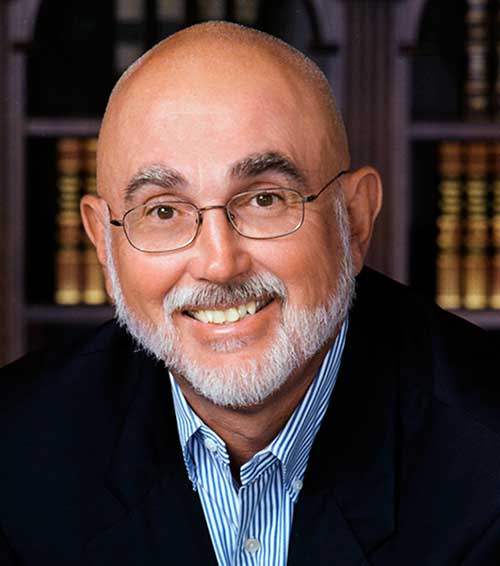

Why More Financial Advisors Are Practicing Transparency For Custodians
How do financial advisors stand out in a crowded marketplace? One increasingly frequent business practice is full transparency regarding information that impacts retail investors. For example, provide the who, what, and why information for the custodian who has physical possession of client assets.
We think this information is so important that we recommend dedicating a separate page to it on financial advisor websites. Transparency is the number one way financial advisors build online trust, which increases the probability of investors contacting them.
Get the right financial advisor marketing strategy! Connect with Paladin Digital Marketing today!
Some advisors still choose not to disclose the name of their custodian online, while others provide the name but omit key details. However, the more information financial advisors provide, the better investors can assess the security of their assets and the legitimacy of their firms.
The role of this template is twofold:
- Explain how transparency benefits investors and financial advisors
- Outline key custodian features that are important to investors
Basic Custodian Information
Every financial advisor should disclose basic details about their custodian, such as:
- Custodian Name
- Longevity
- Ownership (e.g., Pershing and Bank of New York Mellon)
- Assets Under Management, Advisement, or Administration
- Types of services
- Method(s) of compensation
- Key Security and Compliance Features
Brand-Name Custodians
Well-known custodians provide security due to their established reputations and brand awareness. Investors may recognize these names from advertising, institutional history, or media coverage. Prominent custodians include:
- Charles Schwab
- Fidelity Institutional
- Pershing
- LPL Financial
While there are many other custodians, these four dominate the independent RIA and IAR space.
Non-Brand-Name Custodians
Advisors who use non-brand-name custodians must be more intentional about presenting them to investors. Since investors may not be familiar with these custodians’ names, explaining why they were selected and how they meet the same standards as larger institutions is essential.
Highlight Security and Compliance: Advisors should emphasize the regulatory oversight and security measures for their chosen custodians. Even if a custodian lacks national brand recognition, it may still meet rigorous SEC or FINRA compliance standards. Clear disclosures about how client assets are protected can alleviate investor concerns.
Leverage Institutional Partnerships: Small custodians partner with larger financial institutions for trade execution, clearing, or reporting services. Advisors should communicate these relationships to reinforce credibility. For example, “Our custodian partners with XYZ Clearing Firm to ensure seamless transactions and high-level security for your investments.”
Emphasize Specialized Services: Many smaller custodians offer unique advantages, such as customized reporting, enhanced personal service, or better integration with niche investment strategies. Financial advisors should highlight these benefits to differentiate their custodian choice.
Transparency about why a non-brand-name custodian was selected—whether for superior technology, lower costs, or personalized service—helps investors see the value.
Why Do Financial Advisors Need Custodians?
SEC regulations require financial advisors to use custodians because RIAs and IARs cannot directly possess client assets. The custodian, which may be a broker-dealer or a trust company, ensures proper asset safekeeping.
Investors may be skeptical of advisors who do not disclose their custodial relationships. Withholding this information can raise concerns about legitimacy, security, and transparency. By openly sharing custodial details, financial advisors strengthen investor trust and demonstrate compliance with industry regulations.
Additionally, custodians validate advisor credentials by conducting background checks before allowing them to custody assets. This vetting process protects investors and financial advisors by adding an extra layer of security.
Key Services Provided by Custodians
Custodians offer several essential services that protect investors and support financial advisors. The applicable services should be disclosed on financial advisor websites:
- Safekeeping of Assets
- Trade Execution and Transaction Processing
- Statement and Report Generation
- Regulatory Compliance Support
- Fraud Prevention and Account Security
- Portfolio Performance Reporting
- Cash Management and Margin Lending Services
How Custodians Benefit Investors and Advisors
Higher-quality custodians offer several benefits to investors and financial advisors. This information should be posted on financial advisor websites.
For Investors:
- Increased Security: Investors’ assets are protected by third-party custodians, reducing the risk of fraud.
- Practicing Transparency: Understanding who holds their assets fosters confidence in the advisory relationship.
- Fiduciary Oversight: Investors benefit from regulatory safeguards that ensure their advisor operates in their best interests.
For Financial Advisors:
- Trust Building: Advisors who disclose their custodians appear more credible to investors.
- Competitive Differentiation: Many advisors withhold this information, so full transparency can be a unique selling point.
- Streamlined Operations: Custodians handle regulatory compliance and recordkeeping, allowing advisors to focus on client relationships.
How Custodians Impact Fiduciary Practices
Custodians play a direct role in upholding fiduciary integrity by:
- Vetting financial advisors before allowing them to custody assets.
- Monitoring financial activities to prevent misconduct
- Providing independent oversight that separates asset management from asset custody
This built-in accountability reinforces investor confidence in fiduciary advisors.
Custodian Compensation: How Are They Paid?
Financial advisors may be reluctant to disclose fee structures on their websites, preferring to explain them in person when they can use their sales and relationship skills to overcome objections. However, informed investors expect transparency regarding how custodians are compensated.
The common custodian fees can include:
- An all-inclusive wrap fee
- Transaction Fees (e.g., stock and bond trades)
- Account Maintenance Fees
- Margin Interest Charges
- Service Fees (e.g., wire transfers)
- Cash Management Revenue (e.g., interest on uninvested cash)
- Platform Fees (e.g., access to investment products)
Financial advisors who proactively disclose these details differentiate themselves as transparent professionals who eliminate concerns about hidden costs or conflicts of interest.
The Role of SIPC and Private Insurance
Advisors should also explain the protections provided by:
- Securities Investor Protection Corporation (SIPC): This corporation protects investors if a custodian fails (it does not cover market losses or fraud).
- Private Custodian Insurance: Some custodians offer additional protection beyond SIPC limits.
Highlighting these safeguards reassures investors that their assets remain secure, even in a worst-case scenario.
Third-Party vs. In-House Custodians: Why Independence Matters
Independent custodians add a critical layer of investor protection by ensuring financial advisors cannot access client funds directly. In contrast, in-house custodians—those affiliated with advisory firms—introduce potential conflicts of interest and increase the possibility of financial misconduct.
Notable financial fraud cases have involved firms that custody their own assets rather than using a third-party custodian. Independent advisors should emphasize their use of third-party custodians to strengthen investor confidence.
Case Study: The Bernie Madoff Scandal
Who Was the Custodian for Bernie Madoff’s Investments?
Bernie Madoff’s Ponzi scheme was unique because he did not use an independent third-party custodian to hold client assets. Instead, Madoff’s firm, Bernard L. Madoff Investment Securities LLC (BLMIS), acted as the investment manager and the custodian. This setup was critical to his fraud, allowing him to control and fabricate account statements without any independent verification of trades or assets.
How Did Madoff Use the Custodian Role to Rip Off Investors?
Because Madoff’s firm served as its own custodian, there were no independent checks on whether the assets he claimed to be investing existed. Here’s how he manipulated this system to maintain his Ponzi scheme:
Fake Account Statements: Since Madoff controlled the trading and custody functions, he could generate fictitious investment statements showing consistent, positive returns regardless of market conditions.
No Independent Oversight: A legitimate custodian would have required actual securities and cash to back up client accounts, but Madoff’s firm simply fabricated their positions.
Avoiding Third-Party Verification: Independent custodians provide checks and balances by ensuring that investment positions match fund managers’ claims. Madoff sidestepped this process, making it impossible for investors to verify their holdings with a separate entity.
The Role of an Incompetent Auditor: Madoff used a tiny, obscure accounting firm, Friehling & Horowitz, which failed to conduct real audits. A reputable auditor working with an independent custodian would have exposed the fraud earlier.
Bernie Madoff sustained his Ponzi scheme for decades largely because he acted as his own custodian, preventing independent verification of client assets. If investors had followed best practices in due diligence—such as verifying the existence of an independent custodian—they could have uncovered his fraud even earlier.
Bernie Madoff orchestrated the largest Ponzi scheme in history, defrauding investors of an estimated $65 billion in paper losses. However, the amount of money stolen—meaning the real cash from investors—was approximately $17.5 billion. Through asset recovery efforts led by a court-appointed trustee, more than $14 billion has been recovered and returned to victims.
Marketing Benefits of Custodian Disclosure
Beyond trust and security, disclosing custodian relationships provides powerful marketing advantages, including:
Competitive Differentiation: Many advisors omit this information, so including it sets advisors apart.
Enhanced Credibility: Being associated with a reputable custodian boosts professionalism.
Improved SEO & Conversions: Including custodian names can improve search rankings for “[Custodian Name] financial advisor".
Reinforced Fiduciary Commitment: Transparency about custodial arrangements demonstrates an advisor’s dedication to acting in clients’ best interests.
Conclusion: The Case for Custodian Transparency
You may want to share this article in the documents you provide prospective clients. Financial advisors can educate investors about the importance of the right custodian and how their firms deal with this issue.
Independent financial advisors who openly disclose their custodians on their websites establish trust, credibility, and transparency—all key factors in attracting and retaining investors.
Since custodians play a critical role in safeguarding client assets, providing this information proactively can ease investor concerns and enhance an advisor’s reputation. By leveraging the credibility of custodians—whether brand-name or not—advisors can differentiate themselves, improve online visibility, and create stronger client relationships that lead to engagements and new clients.

Jack Waymire, BA, MBA
Search Here
Categories
- AI (18)
- blogging (2)
- branding (1)
- content (12)
- custodians (1)
- Digital (345)
- email marketing (3)
- fcmo (2)
- fees (1)
- financial advisor marketing (62)
- Google (3)
- Ideas & Tips (78)
- Investor Experience (7)
- lead generation (7)
- linkedin (1)
- Marketing (371)
- newsletters (1)
- Online Transparency (2)
- search engine optimization (3)
- seo (9)
- Social Media (2)
- video (2)
- Websites (108)
- YouTube channel (2)
Recent Posts
-

-

How Financial Advisor Blogging Generates Thought Leadership and Leads
November 24, 2025 -

Top 5 Ways Digital Marketing Benefits Financial Advisors Seeking Leads
November 20, 2025 -

Trust Is The Biggest Online Marketing Challenge For Financial Advisors
November 17, 2025 -

Compliant Financial Advisor Bios Using AI Website Builders
October 22, 2025

